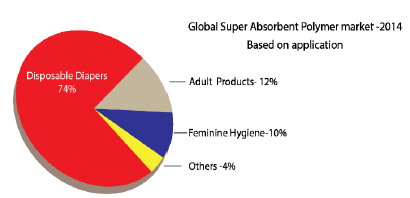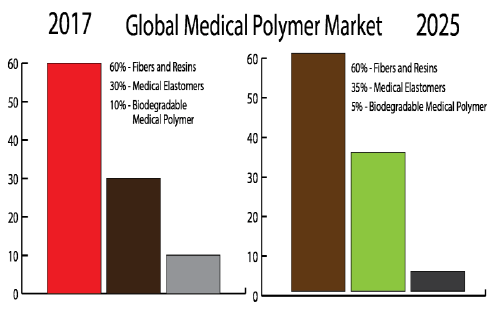Market Analysis - Materials Science and Nanotechnology (2019) Volume 3, Issue 1
Market Analysis on Polymer Chemistry and Materials Engineering
Srinivasu VallabhapurapuDepartment of Physics, College of Science, Engineering and Technology, University of South Africa, Email: vvsrinivasu@hotmail.com
11th International Conference and Exhibition on Chemistry and Polymer Chemistry are scheduled on Jun 29-30, 2020 Paris, France is pleased to welcome you all to carve out your innovative ideas, thoughts and your research work on all branches of science touching the corners of polymer chemistry and materials science. This conference is designed for the professionals at all levels, Eminent Scientists/ Research Professors in the field of polymer chemistry, Junior/Senior research fellows, Students, Directors of polymer research companies, Chemical Engineers, Members of physics and Chemistry associations, Senior executives, Sales and marketing personnel, Strategic planners, who will benefit from a broad overview of the polymer industry.
Polymer chemist study the vivid nature of polymers, a dense complex structure that are build up monomers to create abundant of useful materials with unique characteristics by manipulating the molecular structure of monomer, applying various chemical and physical processing techniques. Polymers permeate every aspect of life and difficult for the current status of the world without synthetic and natural polymers. Right from furniture, electronics, communication, packaging, energy and healthcare, transportation, sports, and leisure, in everything from tractors and detergents to fabrics to aircraft.
A polymer can be a product or act as an ingredient that forms another product. All this possible, because of its glorious properties of lightweight, hard, strong, and flexible, and may have special thermal, electrical, or optical characteristics. Because of their low cost, adaptability, and high specificity. The polymer market is classified on the basis of application into packaging, electronics, food, petrochemicals, healthcare, building and construction, electronics and communication, and transport. Among these, the packaging application has the highest market share, as packaging includes food packaging, pharmaceutical packaging, in every sphere of life. It will have a major influence on this business in the sense of China-US trade war and global economic instability and uncertainty. The Product, Application and Geography Report on Polypropylene–Global forecast for 2023 is a technical and detailed research report on the major regional market conditions in the world, focusing on the key regions
Conference Highlights
Conference on Polymer chemistry is a one-stop meeting point for all the influential and eminent professionals around the globe to quench your knowledge thirst.
Conference on chemical compound chemistry may be a theme-based platform for all your analysis work, paper presentation and information gathering for your thesis.
Venture for business delegates, entrepreneurs, and commercials.

The demand for polymers in markets is at peak, from packaging, automotive, infrastructure, transport rails, telecom, and other emerging economies. Polymer substitutes metals, glass, paper, and different materials because of its lightweight and strength and the style flexibility in conjunction with inexpensive. Thermoplastics segments are expected to witness the highest growth over the next five years. The increasing applications of engineered plastics, manufacturing equipment in mechanical engineering, shape memory polymer, phase transition polymer, use of smart polymers for controlled drug delivery, fuel the growth of the market in upcoming years.
A renowned global management consulting and market research firm, has investigated the global polymer industry by applications, product types (Thermoplastics, Thermosets, Elastomers) and regions ( North America, Europe, Asia-Pacific, Rest of the world) of the world)and has revealed a comprehensive report "Global chemical compound business 2015-2020: Trend, Profit, and Forecast Analysis."
Polymer Market Competitive Landscape
The Dow Chemical Company, LyondellBasell Industries N.V., Exxon Mobil Corporation, SABIC, BASF SE, INEOS AG, Eni S.p. A., Chevron Phillips Chemical Company LLC, and LANXESS are some of the major players operating on the global polymer market. The study provides historical and market size forecast data for various countries including the United States, Canada, France, Germany, the United Kingdom, Italy, Spain, Japan, China, India, Brazil, Saudi Arabia, and South Africa.
Below mentioned are the market growth forecast:
During the period of 2018-2022, the chemical market grows at a CAGR of 5.47% and polymers market to grow at a CAGR of 6.93%. The global super absorbent polymers valued at USD 7.85 BILLION in 2016 and to grow at a CAGR of 5.8 %, global flexible plastic packaging market at a CAGR of 6.7 %, global polymer foam market size is projected at a CAGR of 6.6% from 2018-2024. The global styrene block copolymer market was valued at USD 6.26 billion in 2016 and to grow at a CAGR of 6.3% over the forecast period. The global market for biodegradable plastics is projected to grow at a robust CAGR of 9.90%and global synthetic fibres market size at a CAGR of 5.3% from 2017 to 2025. The report covers the polymer foam market by resin types, such as polyurethane (PU), polyvinyl chloride (PVC), polystyrene (PS), polyolefin, phenolic, and melamine. Global Smart Polymers to grow from $1.52 billion in 2016 to reach $3.98 billion by 2023 at a CAGR of 14.7%.

Recent trends on the global polymer market include increasing demand for polymers in various industries, including building and manufacturing, packaging, consumer goods, electronics and telecommunications, and automotive. Because of their low weight and cost, these industries mainly substitute polymers for paper, glass, and metals. In developing countries such as India, China, and Brazil, the industry has seen significant growth as the purchasing power of consumers is growing.
Polymers are essentially heavy molecules made from a mixture of simple molecular units called monomers. Such compounds ' properties depend on their bonds as well as the chain length. Through their essence they are both natural and synthetic. The natural ones are made of natural substances such as rubber, resins and gums, while the synthetic ones are created by multiple monomer polymerizations. The polymer industry is divided by form into thermoplastics, thermosets, and elastomers. Among these, because of its superior properties, the thermosets group retains the highest market share. For example, thermosets are harder as compared to others, stronger as the strength between their covalent bonds is high, and they cannot be broken easily.
The polymer industry is categorized based on the product into polyethylene, polyvinyl chloride, polypropylene, polystyrene, polyamide, polyurethane and polyacrylamide. The most used commodity on the market is polyethylene due to its various uses in the packaging industry such as juice and milk packaging and consumer goods, as well as in the fiber and textile industries for clothing manufacturing.